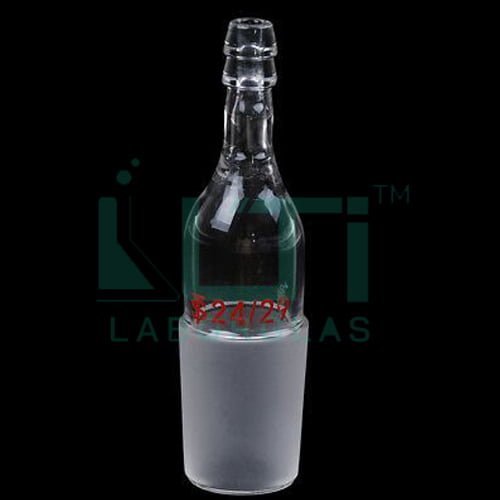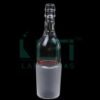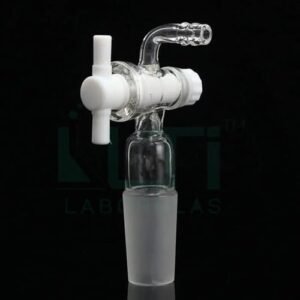Chemical Resistant
| Part No. | MALE Joint | House Connection O.D. inches | Pack QTY. |
| 2250-14M | 14/10 | 5/16 | 10 |
| 2250-14M-A | 14/20 | 5/16 | 10 |
| 2250-19M | 19/22 | 5/16 | 10 |
| 2250-24M | 24/40 | 3/8 | 10 |
| 2250-29M | 29/42 | 3/8 | 10 |
Here are some general applications:
- Chemical Reactions:
- The straight adapter with a hose connection can be used in chemical reactions to connect different glassware components, facilitating the introduction or removal of reagents.
- Distillation Setups:
- In distillation experiments, the straight adapter may serve to connect the distillation flask to the condenser. The hose connection could be utilized for vacuum supply or inert gas introduction during the distillation process.
- Vacuum Filtration:
- The hose connection can be employed for attaching a vacuum source, making the adapter suitable for vacuum filtration setups where a vacuum is required for the filtration process.
- Liquid Transfer:
- This adapter is useful for controlled liquid transfer between various glassware components, aiding processes such as titrations, liquid-phase reactions, or transferring liquids between containers.
- Gas Inlet or Outlet:
- The hose connection may serve as a gas inlet or outlet, allowing for the introduction or removal of gases during reactions or experimental processes.
- Laboratory Plumbing:
- The adapter contributes to the laboratory plumbing system, providing a straight and flexible connection for hoses used in different experiments or apparatus setups.
- Versatile Experimental Setups:
- The straight adapter with a hose connection allows for flexibility in experimental setups, accommodating various laboratory configurations and facilitating hose connections for different purposes.
- Standardization:
- The use of adapters following certain standards, such as those set by ASTM, contributes to the standardization of laboratory procedures. This ensures compatibility and consistency in experimental setups.







